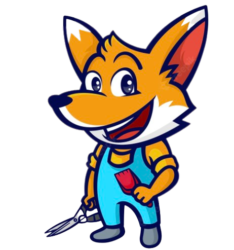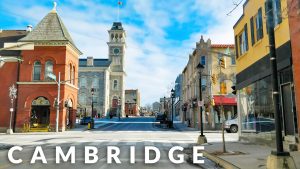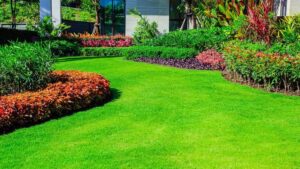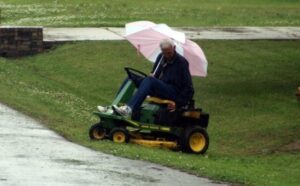
Every gardener and lawn enthusiast has encountered the perennial question: “What makes a weed a weed?”
In many yards and gardens, these enigmatic plants pop up, often uninvited, causing confusion and frustration. While some are easily recognizable, others may be mistaken for cherished plants.
In this article, we’ll delve into the world of weeds, exploring their definition, characteristics, and the art of distinguishing them from desirable plants. Armed with knowledge, we can navigate our gardens with confidence, appreciating nature’s misunderstood guests for what they truly are.
Defining Weeds
Weeds are plants that grow in locations where we, as gardeners, don’t want them. They are often seen as invaders, competing with our cherished flowers, vegetables, or turf for space, nutrients, and sunlight.
What sets them apart from other plants is their resilience and ability to thrive in adverse conditions. Their survival tactics can include rapid growth, copious seed production, and an uncanny knack for spreading.
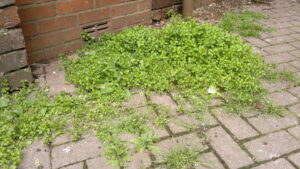
Common Types of Weeds
Annual Weeds: These opportunistic plants complete their life cycle within a year, from seed germination to seed production, and then they die off. Examples include chickweed, crabgrass, and common purslane.
Biennial Weeds: Biennial weeds have a two-year life cycle. In the first year, they grow leaves, stems, and roots. During the second year, they flower, produce seeds, and eventually die. Examples include mullein and bull thistle.
Perennial Weeds: Perennial weeds can live for several years, often returning each season. They might propagate through seeds or underground structures like rhizomes or tubers. Examples include dandelions, bindweed, and Canada thistle.
Distinguishing Weeds from Desirable Plants
1. Plant Identification: The first step in discerning a weed from a desirable plant is proper identification. Use plant identification guides, apps, or seek help from experienced gardeners or horticulturists to recognize unfamiliar species.
2. Know Your Garden: Understanding the plants you intentionally cultivated in your garden helps in identifying intruders. Familiarity with the characteristics, leaves, flowers, and growth habits of your chosen plants makes it easier to spot outliers.
3. Growth Patterns: Observe how the plant grows. Weeds often have vigorous and opportunistic growth, spreading quickly and overshadowing nearby plants. Vigilantly removing weeds as soon as they appear can prevent them from taking over.
4. Leaf Shape and Arrangement: Pay attention to the shape, size, and arrangement of leaves. Some weeds have distinctive leaves that differ from the desired plants. For example, dandelions have serrated, lance-shaped leaves arranged in a basal rosette.
5. Flowers and Seeds: Flowers and seeds provide critical clues for identification. Weeds may produce small, inconspicuous flowers, while others bear seeds that can disperse widely.
6. Growth Habit: Some weeds have unique growth habits. Creeping or vining weeds, like bindweed, can quickly overrun gardens and choke desirable plants.
7. History and Location: Knowing the history of your garden or lawn can also provide insights. If you observe a plant that wasn’t intentionally planted, it’s more likely to be a weed.
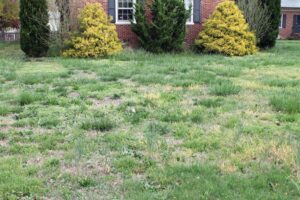
Embracing Nature’s Resilience
While it’s essential to manage weeds to protect the health and aesthetics of our gardens, it’s also crucial to recognize their ecological significance.
Weeds often play a role in repairing damaged soil, acting as pioneers in disturbed areas. Their deep roots can break up compacted soil, making it more suitable for other plants to grow.
Additionally, some weeds serve as food sources for beneficial insects or provide habitat for wildlife.
Weed Management Strategies
Mulching: Applying organic mulch helps suppress weed growth by smothering them and preventing sunlight from reaching the soil surface.
Hand Pulling: Regularly inspect your garden and hand-pull young weeds before they have a chance to set seeds.
Cultural Practices: Encourage healthy desirable plants through proper watering, fertilization, and soil improvement. Strong, vigorous plants are more likely to outcompete weeds.
Chemical Control: As a last resort, chemical herbicides can be used, but with caution. Selective herbicides target specific weeds, minimizing harm to desired plants.
Crop Rotation: In vegetable gardens, rotating crops annually can disrupt weed life cycles and reduce weed pressure.
Conclusion
Understanding what makes a weed a weed empowers us to tackle garden challenges confidently.
By identifying unwanted plants and employing effective weed management strategies, we can create thriving and beautiful landscapes.
As we tend to our gardens, let’s also appreciate the resilience and ecological roles of these misunderstood guests, striking a harmonious balance with nature’s tenacious will to grow.
For more info, watch this video about backyard lawn cleanup and subscribe to our Youtube channel!
